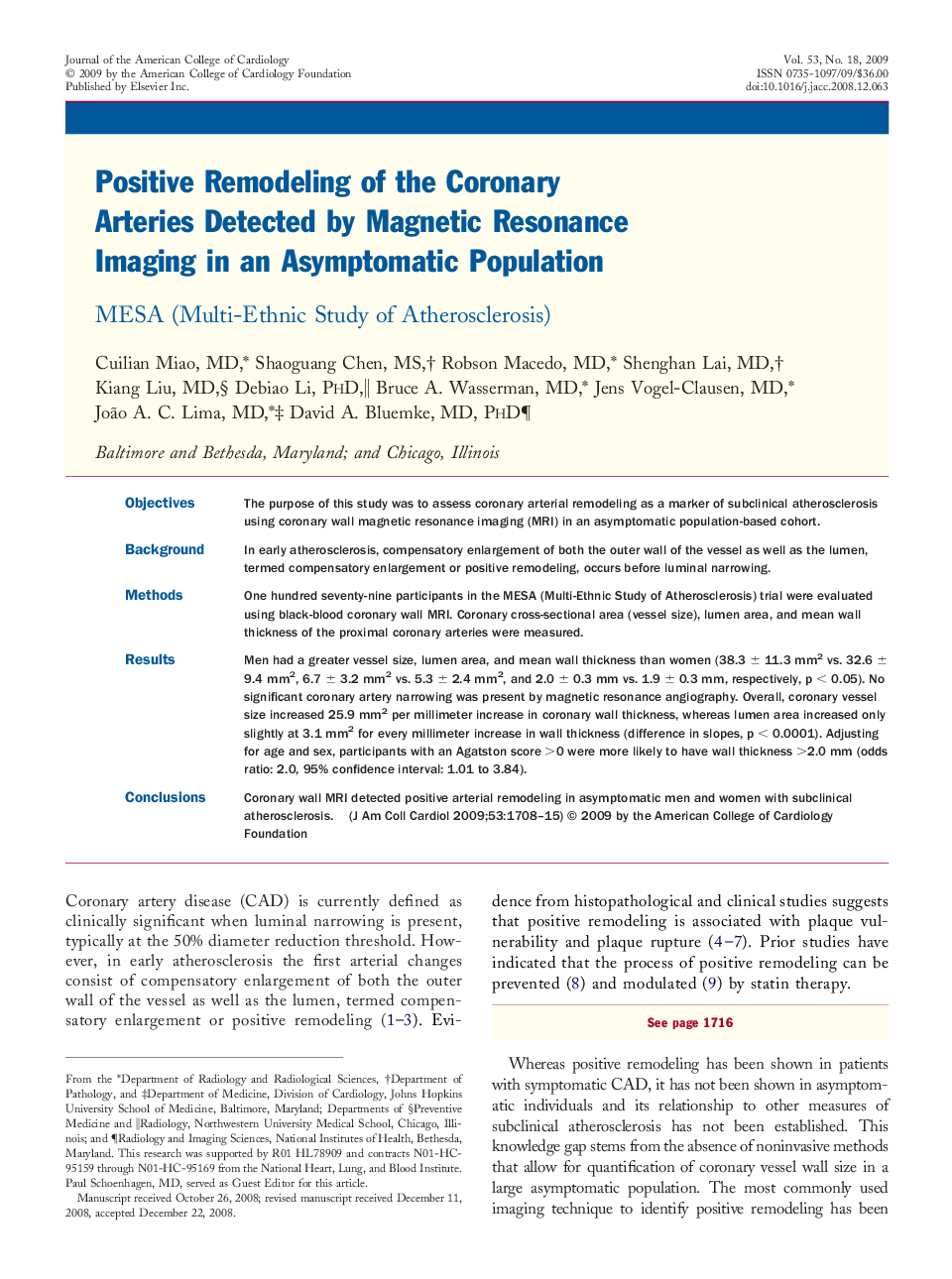| Article ID | Journal | Published Year | Pages | File Type |
|---|---|---|---|---|
| 2949207 | Journal of the American College of Cardiology | 2009 | 8 Pages |
ObjectivesThe purpose of this study was to assess coronary arterial remodeling as a marker of subclinical atherosclerosis using coronary wall magnetic resonance imaging (MRI) in an asymptomatic population-based cohort.BackgroundIn early atherosclerosis, compensatory enlargement of both the outer wall of the vessel as well as the lumen, termed compensatory enlargement or positive remodeling, occurs before luminal narrowing.MethodsOne hundred seventy-nine participants in the MESA (Multi-Ethnic Study of Atherosclerosis) trial were evaluated using black-blood coronary wall MRI. Coronary cross-sectional area (vessel size), lumen area, and mean wall thickness of the proximal coronary arteries were measured.ResultsMen had a greater vessel size, lumen area, and mean wall thickness than women (38.3 ± 11.3 mm2vs. 32.6 ± 9.4 mm2, 6.7 ± 3.2 mm2vs. 5.3 ± 2.4 mm2, and 2.0 ± 0.3 mm vs. 1.9 ± 0.3 mm, respectively, p < 0.05). No significant coronary artery narrowing was present by magnetic resonance angiography. Overall, coronary vessel size increased 25.9 mm2per millimeter increase in coronary wall thickness, whereas lumen area increased only slightly at 3.1 mm2for every millimeter increase in wall thickness (difference in slopes, p < 0.0001). Adjusting for age and sex, participants with an Agatston score >0 were more likely to have wall thickness >2.0 mm (odds ratio: 2.0, 95% confidence interval: 1.01 to 3.84).ConclusionsCoronary wall MRI detected positive arterial remodeling in asymptomatic men and women with subclinical atherosclerosis.
